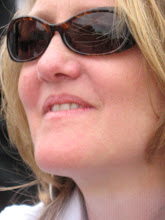 Easter Sunday. We rose before dawn in Paris, but didn’t breakfast until clearing the crowds of holiday travellers at Orly Airport, making our one-hour flight, renting a car, and driving to the Leaning Tower of Pisa just as the bells chimed 10:00. On the way to Florence, we passed a turn-off for the village of Vinci, prompting discussion in our miniscule baby-blue Fiat 500 about whether this had been Leonardo’s hometown. Just last year we visited his home in France, and final resting place, to view replicas of his inventions: the Clos Lucé, located in the Loire Valley town of Amboise, had been provided Leonardo by his friend and benefactor, King Francois I (1494-1547). When Leonardo died in 1519, Francois lived just down the hill at the Château d’Amboise, one of many chateaux built by the King credited with bringing the Renaissance from Italy to France.
Easter Sunday. We rose before dawn in Paris, but didn’t breakfast until clearing the crowds of holiday travellers at Orly Airport, making our one-hour flight, renting a car, and driving to the Leaning Tower of Pisa just as the bells chimed 10:00. On the way to Florence, we passed a turn-off for the village of Vinci, prompting discussion in our miniscule baby-blue Fiat 500 about whether this had been Leonardo’s hometown. Just last year we visited his home in France, and final resting place, to view replicas of his inventions: the Clos Lucé, located in the Loire Valley town of Amboise, had been provided Leonardo by his friend and benefactor, King Francois I (1494-1547). When Leonardo died in 1519, Francois lived just down the hill at the Château d’Amboise, one of many chateaux built by the King credited with bringing the Renaissance from Italy to France. Upon succeeding to the throne in 1515, Francois pursued a series of wars in Italy in an attempt to unseat his sworn enemy, Charles V, as Holy Roman Emperor. He failed, but he did manage to capture the city-state of Milan. He immediately fell under the spell of the city’s art and architecture. Like Florence, Milan had by then been transformed by Renaissance style and ideals. Thus, from the earliest years of his reign, Francois I strove to bring the beauty of the northern Italian states back to Paris and the Loire Valley.
Upon succeeding to the throne in 1515, Francois pursued a series of wars in Italy in an attempt to unseat his sworn enemy, Charles V, as Holy Roman Emperor. He failed, but he did manage to capture the city-state of Milan. He immediately fell under the spell of the city’s art and architecture. Like Florence, Milan had by then been transformed by Renaissance style and ideals. Thus, from the earliest years of his reign, Francois I strove to bring the beauty of the northern Italian states back to Paris and the Loire Valley.He built or renovated numerous Loire Valley châteaux in Renaissance style: Amboise, Blois, as well as the magnificent Château de Chambord, which some believe Leonardo designed. Francois rebuilt the Louvre, transforming it from an imposing crenellated medieval fortress into a welcoming Renaissance palace. He financed the building of Paris’ Hôtel de Ville (City Hall), constructed the Château de Madrid in the Bois de Boulogne, and refurbished the Château de St-Germain-en-Laye to the northwest of Paris. But his most extensive building project was the reconstruction and expansion of the royal Château de Fontainebleau. Luxurious both inside and out, including a central fountain said to mix wine with water, Fontainebleau became Francois’ favorite royal residence.
 Francois I was also a great patron of the arts. He supported a number of period writers and developed a royal library filled with rare books and manuscripts. He also encouraged many of Italy’s great painters and to come to France to teach their French contemporaries.
Francois I was also a great patron of the arts. He supported a number of period writers and developed a royal library filled with rare books and manuscripts. He also encouraged many of Italy’s great painters and to come to France to teach their French contemporaries. By the time Leonardo da Vinci made it to France he was an elderly man and no longer painting, having earlier suffered a stroke. But he brought with him many now famous works, including the Mona Lisa, known in French as La Joconde. These works stayed in France upon his death, and along with paintings by Italian such masters as Michelangelo, Titian, and Raphael – all procured during the reign of Francois I – they make up part of the royal collection now on display at the Louvre Museum.
By the time Leonardo da Vinci made it to France he was an elderly man and no longer painting, having earlier suffered a stroke. But he brought with him many now famous works, including the Mona Lisa, known in French as La Joconde. These works stayed in France upon his death, and along with paintings by Italian such masters as Michelangelo, Titian, and Raphael – all procured during the reign of Francois I – they make up part of the royal collection now on display at the Louvre Museum.We finished the day at a 15th century Renaissance-style Tuscan Abbey, listening to the monks chant their ritualistic prayers. Amid the Gregorian song and smell of incense, we were as transfixed by the wood-inlay perspective renderings lining the walls of the chapel choir as we were soothed by the monk-produced red wines and hazelnut liqueur that later accompanied Easter dinner.
Sources:
http://en.wikipedia.org/wiki/Francis_I_of_France
http://www.amazon.com/Renaissance-Warrior-Patron-Reign-Francis/dp/052157885X
http://www.librarything.com/work/14788
Images:
All images courtesy of Wikipedia and Wikimedia Commons.

No comments:
Post a Comment